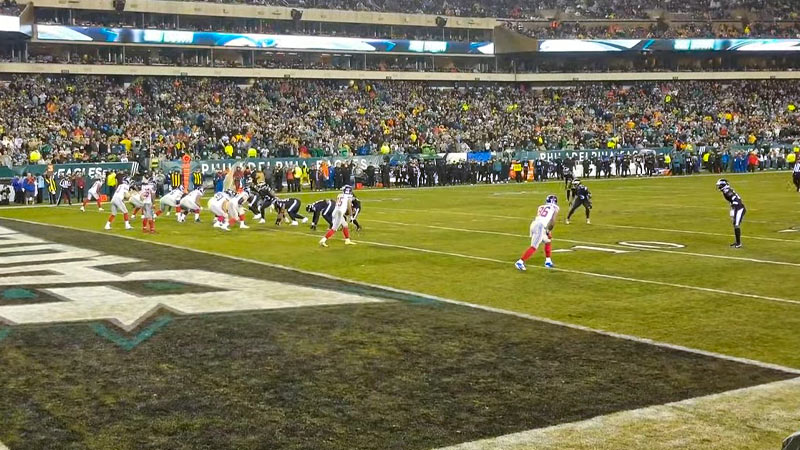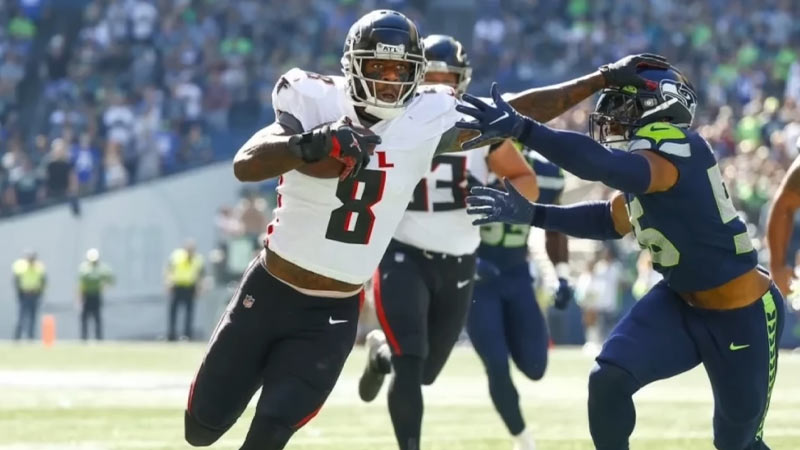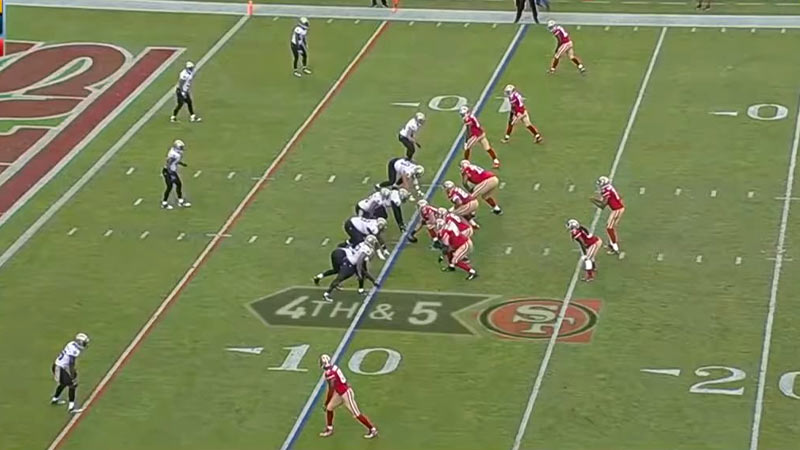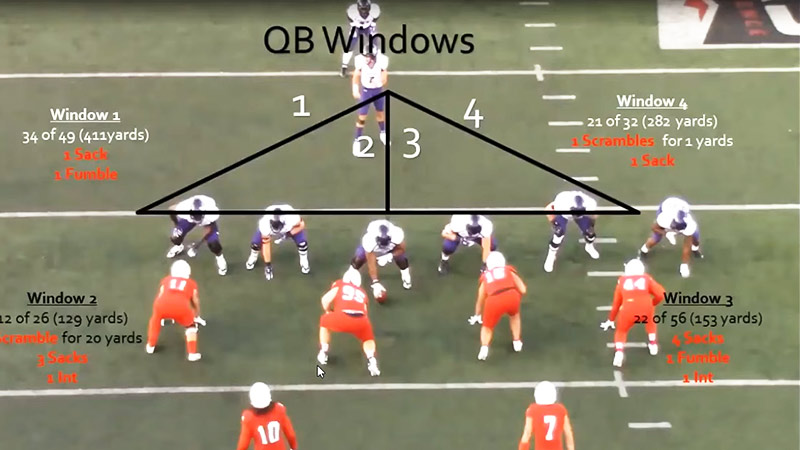In the thrilling world of football, the term “3rd Down” holds immense significance. As the game unfolds, each down becomes a tactical chess match between offense and defense, and the third down is often the tipping point that can determine the course of a drive.
A 3rd Down signifies that the offensive team has used two of its allotted four downs (four attempts) to advance the ball. Now, with only one more opportunity left to gain the necessary yardage for a 1st Down, the pressure intensifies.
Defenses strategize to stop the offense, while the offense seeks innovative ways to extend their possession and move closer to their ultimate goal: reaching the end zone.
In this introduction, we embark on a journey to understand What Third Down means in Football, exploring its pivotal role and the exhilarating moments it brings to the gridiron.
What Does 3rd Down Mean In Football?
In football, “3rd down” refers to a critical phase of the game during which the offense has a limited number of attempts to advance the ball toward the opponent’s end zone and gain a fresh set of downs.
Each team typically has four downs, or opportunities, to move the ball 10 yards closer to the end zone. On 3rd down, the offense has already had two attempts to make progress, and they now face a pivotal moment.
If they fail to advance the ball the required distance, they will be forced to either punt the ball to the opposing team (if they are in their own territory) or attempt a field goal (if they are close enough to the opponent’s end zone).
Successfully converting on 3rd down is crucial for maintaining possession of the ball and sustaining a drive, while the defense aims to stop the offense from achieving this goal to gain control of the game.
It’s a critical juncture that often requires strategic play-calling and execution from both sides of the ball.
3rd Down Strategies

Here are some common 3rd down strategies in football:
Short Pass Plays
One popular strategy on 3rd down is to call for short pass plays. These plays involve the quarterback targeting a receiver who is close to or just beyond the first-down marker.
The idea is to complete a high-percentage pass that allows the receiver to gain the necessary yardage after the catch, thus securing a new set of downs.
Screen Passes
Screen passes are designed to deceive the defense by allowing them to penetrate the offensive line before the quarterback quickly releases the ball to a running back or receiver in the flat.
The hope is that the defense overcommits to pressuring the quarterback, leaving the screen receiver with open space to gain the required yardage.
Run Plays
While passing is common on 3rd down, some teams opt for run plays, particularly when they’re close to the first-down marker or in short-yardage situations. A well-executed run play relies on the offensive line opening up a hole for the running back to gain the necessary yardage.
Draw Plays
A draw play is a type of run play designed to catch the defense off guard. The quarterback drops back as if to pass, drawing the defense in, and then hands the ball off to a running back.
If the defense has committed to pass coverage, this play can exploit gaps in the defensive line for significant yardage.
Play-Action Passes
Play-action passes involve the quarterback faking a handoff to a running back before attempting a pass. This strategy aims to freeze or confuse the defense, creating opportunities for receivers to get open downfield for a big gain.
Rollout Passes
On 3rd down, quarterbacks may use rollout passes to buy time and create passing lanes. The quarterback moves outside the pocket, giving them a better view of the field and the option to throw to a receiver or run for the first down if necessary.
Option Plays
Option plays are a riskier but potentially high-reward strategy on 3rd down. The quarterback can run an option play where they have the choice to pass, run, or pitch the ball to a running back based on the defense’s reactions.
This can be particularly effective if the quarterback is a strong runner and the defense is unsure of the play’s outcome.
Each of these strategies comes with its own set of considerations and risks, and the choice often depends on the team’s strengths, the game situation, and the tendencies of the opposing defense.
Successful execution of these strategies can make the crucial difference in converting 3rd downs and keeping a drive alive.
3rd Down Rules

Here are seven important rules related to 3rd downs in football:
Distance to Gain a First Down
The primary rule on 3rd down is that the offense must gain a specific distance to earn a new set of downs.
This distance is typically 10 yards in American football, but it can vary depending on the league or level of play. The line to gain is marked with a yellow first-down marker on the field.
Four Downs to Advance the Ball
The offense is given four downs (or attempts) to move the ball 10 yards past the line of scrimmage. If they succeed in reaching or surpassing this yardage within the allotted four downs, they receive a fresh set of four downs to continue their drive.
Incompletion and Turnover on Downs
If the offense fails to gain the necessary yardage on 3rd down and decides not to punt or attempt a field goal, they may choose to pass the ball. However, if the pass falls incomplete, it results in a turnover on downs, and the opposing team takes possession of the ball at the spot of the previous play.
Punting on 4th Down
Typically, if the offense is unable to convert on 3rd down and is too far from the opponent’s end zone to attempt a field goal, they will choose to punt the ball on 4th down.
This strategic kick aims to change field position and make it more challenging for the opposing offense to score.
Field Goal Attempts
In some situations, if a team is close enough to the opponent’s end zone but still short of the first-down marker on 3rd down, they may opt to attempt a field goal. If successful, this scores three points and transfers possession to the opposing team, typically via a kickoff.
Offensive Penalties
On 3rd down, any offensive penalties (such as holding or false starts) can be especially costly, as they can push the offense further from the first-down marker. Teams must be disciplined to avoid these setbacks on crucial downs.
Defensive Pass Interference
If a defensive player interferes with a receiver’s ability to catch a pass on 3rd down, the offense may be awarded a first down regardless of whether they completed the pass. This rule is in place to prevent defenders from unfairly impeding the progress of the offense.
These rules are fundamental to understanding the dynamics of 3rd downs in football. They dictate the strategies employed by both offensive and defensive teams and play a significant role in determining the outcome of a game.
Which Player Does Well In 3rd Down Mean In Football?

Success on 3rd down in football often relies on the specific skills and abilities of various players on the team. Here are the types of players who typically perform well on 3rd downs:
Quarterback (QB)
The quarterback is the central figure on 3rd downs and is responsible for making accurate throws under pressure. A great QB excels in decision-making, reading defenses, and finding open receivers to convert crucial 3rd-down situations. Their ability to remain composed and make precise passes is paramount.
Wide Receiver (WR)
Receivers with exceptional route-running, agility, and hands are invaluable on 3rd downs. They must gain separation from defenders, make precise cuts, and catch passes in traffic.
Slot receivers, in particular, often become key targets on 3rd downs due to their ability to work the middle of the field.
Tight End (TE)
Tight ends are versatile players who can both block and catch passes. A skilled tight end can provide a reliable short-to-medium-range target for the quarterback on 3rd downs, especially in situations where a physical presence and sure hands are essential.
Running Back (RB)
Running backs who excel in pass protection and receiving out of the backfield are highly valuable on 3rd downs. They must be adept at picking up blitzing defenders to give the quarterback time to throw and can serve as safety valves for short dump-off passes.
Offensive Linemen
A strong offensive line is crucial on 3rd downs to provide the quarterback with ample time to make throws and open running lanes for the ball carriers. Offensive linemen who excel in pass blocking can help maintain a clean pocket, allowing the quarterback to scan the field.
Defensive Linemen
On the defensive side, linemen who can disrupt the pocket and pressure the quarterback are instrumental in stopping 3rd-down conversions. Quick and powerful defensive linemen can create havoc in the backfield, forcing rushed throws or even sacking the QB.
Cornerback (CB)
Cornerbacks skilled in man-to-man coverage are valuable on 3rd downs. They must lock down opposing wide receivers, preventing them from gaining separation and making receptions. An interception or deflection by a cornerback can lead to a turnover on 3rd down.
Successful 3rd-down execution often involves the synergy of these players working together.
While quarterbacks and receivers receive much of the attention, the contributions of running backs, tight ends, and linemen are equally essential for both the offense and defense in these pivotal situations.
FAQs
What is 3rd Down in football?
3rd down refers to a critical phase during a football drive. It’s the third of four allotted downs (or attempts) that an offensive team has to advance the ball. The objective is to gain the necessary yardage to achieve a 1st Down and extend the possession.
How many yards are typically needed for a 1st Down on 3rd down?
In most football situations, the offense needs to gain 10 yards to secure a 1st Down on 3rd down. However, the specific yardage required may vary based on the distance remaining to the opponent’s end zone and the field position.
What strategies are commonly employed on 3rd down?
Teams often employ a mix of running and passing plays on 3rd down. The choice of strategy depends on factors like the distance needed for a 1st Down, the skills of the offensive players, and the tendencies of the defense.
Short-yardage situations may involve power runs, while longer distances may call for passing plays to target receivers downfield.
What happens if the offense doesn’t succeed on 3rd down?
If the offense fails to gain the necessary yardage on 3rd down, they face a decision on 4th down. They can either attempt to convert the 4th down and continue their possession or choose to punt the ball to the opposing team, changing possession.
Can the defense stop the offense on 3rd down?
Yes, the defense’s primary objective on 3rd down is to prevent the offense from gaining the required yardage for a 1st Down. This is typically achieved by tackling the ball carrier, defending against passes, and disrupting the offensive play to force a change in possession.
Conclusion
In football, where inches can determine victory or defeat, the concept of “3rd Down” embodies the essence of strategy, determination, and anticipation. As we conclude our exploration, we recognize that 3rd down represents a pivotal juncture where both teams must make crucial decisions.
The offense aims to maintain possession by converting them down, while the defense seeks to thwart their efforts and regain control. It’s a moment of suspense and calculated risk-taking that adds drama to the sport.
Whether it’s the roar of the crowd, the precision of a well-executed pass, or the resilience of a defensive stop, 3rd downplays a central role in shaping the narrative of each football game.
It exemplifies the mental and physical challenges faced by players and coaches alike and underscores the ever-present tension that makes football a captivating spectacle for fans worldwide.







